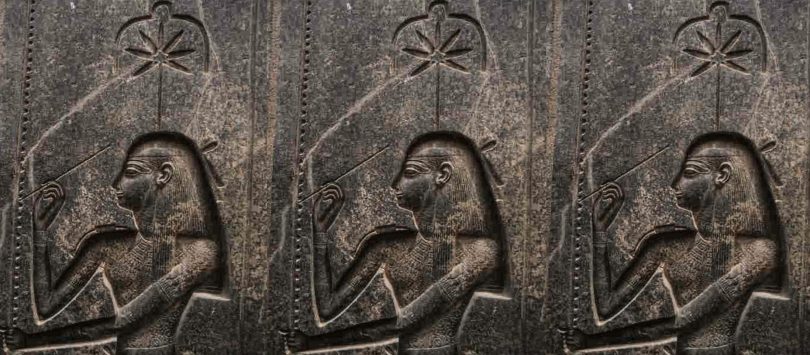For the last few decades, cannabis use has become increasingly popular in the western world, and over just the last few years it’s become a full-blown industry and way-of-life for many Americans – but did you know cannabis has been trendy for millennia and was also used regularly by our ancient ancestors?
While many people used to think that pot became a thing in the 1970s hippie-era, we now know that cannabis use, in one form or another, is documented from basically the beginning of civilized human existence. Ancient uses for this plant aren’t that different from modern ones, and they run the gamut from industrial, to medical, to religious, and even recreational.
The ancients knew the potential of cannabis as a healing plant, as well as it being a resource for producing many basic necessities. This is apparent in the sheer level of variety in the products manufactured by these ancient cultures. They were using cannabis to create textiles and fabrics, medicinal salves, hashish and other concentrates, and it was smoked out of numerous different contraptions comparable to our pipes and small bongs.
This article was quite educational for me, and if there was one take-away that really stuck, it’s that cannabis has been used the same way for thousands of years. It was consumed raw or processed into many different items since the BC era, and it’s always been known as beneficial plant. It was only in the last century that cannabis has been vilified and banned on a massive scale. Until about the 1930s, it was just like any other herb or industrial plant.
To learn more about cannabis – the plant and the industry – make sure to subscribe to the Medical Cannabis Weekly Newsletter
Tracing Plant Origins to Ancient Asia
It has long-been speculated that cannabis was indigenous to the Asian continent, and a pollen study conducted last year theorized that it could narrowed it down specifically to the northeastern edge of the Tibetan plateau. Researchers from the University of Vermont created a database of fossilized pollen which helped them trace the origins of the cannabis plant back 28 million years to the Qinghai Lake area of Tibet.
The study noted the possible route of natural migration that brought cannabis to other nearby regions. “Cannabis dispersed from the Tibetan Plateau, first to the west (Russia and Europe) and then to the east (China). By the end of the Pleistocene, Cannabis spread throughout Asia, except for Southeast Asia. Thus, wild-type Cannabis was available for people across Eurasia to bring into cultivation and domesticate.”
This indicates that cannabis has been cultivated and used this entire time, although it’s just a theory that is incredibly difficult to prove. What we do also know, is that cannabis has an important role in Tantric Buddhism, which also originated in the Tibeto-Himalayan region many years later towards the end of the 6th century. Cannabis was used to facilitate meditation and heighten connectivity and awareness during a traditional, tantric ritual (which also included sexual intercourse). Cannabis was taken in a “large oral dosage being taken in time with the ceremony so that the climax of the high coincides with the climax of the ceremony.”
During that same time frame, some 2,500 years ago, cannabis was burned ceremoniously at the Jirzankal cemetery in the Pamir Mountains of far western China. During excavations of the area, historians found wooden plates, bowls, and Chinese harps that held burnt plant material. All these items were typical of the Sogdian people of western China and Tajikistan, most of whom believed in the teachings of Zoroastrianism, and old Persian religion that had numerous sacred texts that celebrated the “mind-expanding” aspect of cannabis consumption.
Ancient texts and artwork hint at even earlier cannabis use in China and as far south as Syria. According to Michael Frachetti, an archaeologist at Washington University in St. Louis, Missouri, “It’s clear that the ancient Silk Road trafficked in more than spices, grains, and ideas. Crops weren’t just about food, they were also about making contact with another world.”
Egyptian Medicine for the Pharaohs
Egypt was an extremely advanced ancient civilization with detailed and extensive record keeping. Medicinal use of cannabis, referred to as shemshemet in Egyptian hieroglyphs, dates back millennia. Cannabis plant residue has been found on artifacts that are over 4,000 years old.
The earliest medical practitioner in Egypt was both a doctor and a magician, so it makes sense that the cannabis plant, being both therapeutic and psychoactive, appealed to the healers of those times. According to Egyptologist Barbara Watterson, “The Egyptians believed that disease and sickness were caused by an evil force entering the body, and thankfully, plant-based incantations seemed to be a perfect cure.”
Evidence shows that around 2,000 BCE, cannabis salves were used to treat conditions of the eye, like sores and glaucoma – a condition caused by a buildup of intraocular pressure. Interestingly, glaucoma has also been studied extensively in modern medicine and THC (tetrahydrocannabinol) has been found to be an effective treatment option. Ancient Egyptians also used for cannabis for insomnia, nausea, and in suppositories to relieve the pain of hemorrhoids.
Not Just for Getting High – The Underreported Medical Uses of THC
By 1,000 BCE, cannabis was used far and wide throughout Egypt by people of all classes. Several ancient texts encourage readers to “plant medicinal cannabis” to use for themselves and trade for other goods and services. Unfortunately, when it comes to common people and everyday use, data is more anecdotal and less historically accurate.
In addition to medical applications, it’s also believed that cannabis was also used ceremoniously. Traces of cannabis was found on the remains of Ramses the Great – or Ramesses II, the third Pharaoh of the 19th dynasty of Egypt. A “significant deposition of THC” was found on the remains of numerous mummified Egyptians, and this was likely a result of the cannabis having been smoked.
Scythian Warriors Getting High Under the Stars
Although Scythian tribes, once thought to be a myth by most scholars and historians, were comprised of both genders, it’s their women that often get the most attention. Much like Vikings, Scythian women were fierce warriors who fought and pillaged alongside the men, they got tattoos, participated in tribal decisions, and they also smoked cannabis.
Their nomadic lifestyle meant that boys and girls were raised very similarly, and all were trained hunters, gatherers, raiders, and horse riders. The skulls of these warrior women were found buried with weapons, gold, and cannabis-smoking devices – indicating the importance these ancient people placed on this plant.
A Greek historian, Herodotus, documented evidence of what he described as a “Scythian vapor bath” – a felt tipi built over braziers, filled with burning rocks into which the Scythians threw raw cannabis flower and other plant matter. “These seeds smolder and smoke and send forth great clouds of steam. The Scythians howl with joy, awed and elated by their vapor-bath,” he wrote.
Herodotus also noted an “intoxicating fruit” that was thrown into these ceremonial fires. “As it burns, the people inhale the fumes and become intoxicated, just as Greeks become inebriated with wine… They keep adding more to the fire and become even more intoxicated and dance and sing around the fire.” Just think of it all as a historical hotbox.
Numerous archeological discoveries confirm the equipment used for making the tipis, as well as intact braziers with cannabis reside and burnt seeds, along with many different types of cannabis burning kits and devices. This style of “paraphernalia” was found across Scythian territory from the Chinese Pamir Mountains all the way west to Romania.
Historian Adrienne Mayor believes cannabis was most likely used recreationally by the Scythians. It not farfetched that who spent their lives fighting, pillaging, and traveling would use cannabis to relax when they have some downtime. It also could have helped them relieve aches and pains from battle.
Middle Ages and European Paganism
In ancient German pagan tradition, cannabis was associated with Freya, the Norse goddess of love. It was believed that by ingesting cannabis, the user became one with Freya’s feminine and sexual powers. This makes sense, as it’s the feminized plants that produce smokable flowers. Even the harvesting of cannabis was linked to an “erotic high” festival.
Galen (c.129 AD to c.200 AD), a Roman physician, surgeon, and philosopher, wrote about cannabis on numerous occasions in his medical documents. He comments about how it was baked into sweets and served recreationally at parties. He also makes note of its many therapeutic uses, including in the treatment of ear blockage, burns and cuts, inflammations, tumors, gastro-intestinal issues, the eyes, muscle aches, gout and tremors. It was even used to treat certain conditions in livestock and domestic animals.
Get FREE SAMPLE of Top Shelf CBD Flower – No Purchase Necessary
There is also evidence suggesting the Celts (not to be confused with Vikings as they commonly are) were using cannabis too, with traces of hashish found on various items in Hallstatt, the region where Celtic culture originated. And speaking of Vikings, there is also minimal evidence hinting that Vikings where using cannabis, or at the very least, they were growing it.
On a small, secluded farm in the mountains of Southern Norway, decades of research and excavations found that cannabis was regularly cultivated. Artifacts from the Sosteli Iron Age Farm are currently being held at the National Museum of Denmark in Copenhagen. They know for sure that cannabis was being grown, and not by accident. What’s left to be determined is how the Vikings were using this extremely versatile plant.
Final Thoughts
This is barely the tip of the iceberg, as many, MANY more cultures throughout history were using cannabis. There is evidence suggesting it was used by the Celts, Vikings, in some African tribes, but indigenous Shaman, and the list goes on. Cannabis has been used for as long as humans have existed and even our ancient relatives utilized it in many of the same ways as today. It gets brewed into tea, baked into edibles, manufactured into topical solutions, and of course, smoke raw – and it has been utilized medicinally and recreationally for as long as its effects have been known to man.
So, if you ever find yourself wondering if cannabis is an effective therapy or safe to use recreationally, remember that our ancestors, and their ancestors, and their ancestors, have been toking it up since the dawn of time.
Thanks for stopping by CBD TESTERS, your hub for all things cannabis-related. Stop by regularly and make sure to subscribe to the Medical Cannabis Weekly Newsletter to keep up-to-date on all the most interesting industry topics.
Looking for the BEST Hemp Flowers? Subscribe to the CBD Flowers Weekly newsletter.







